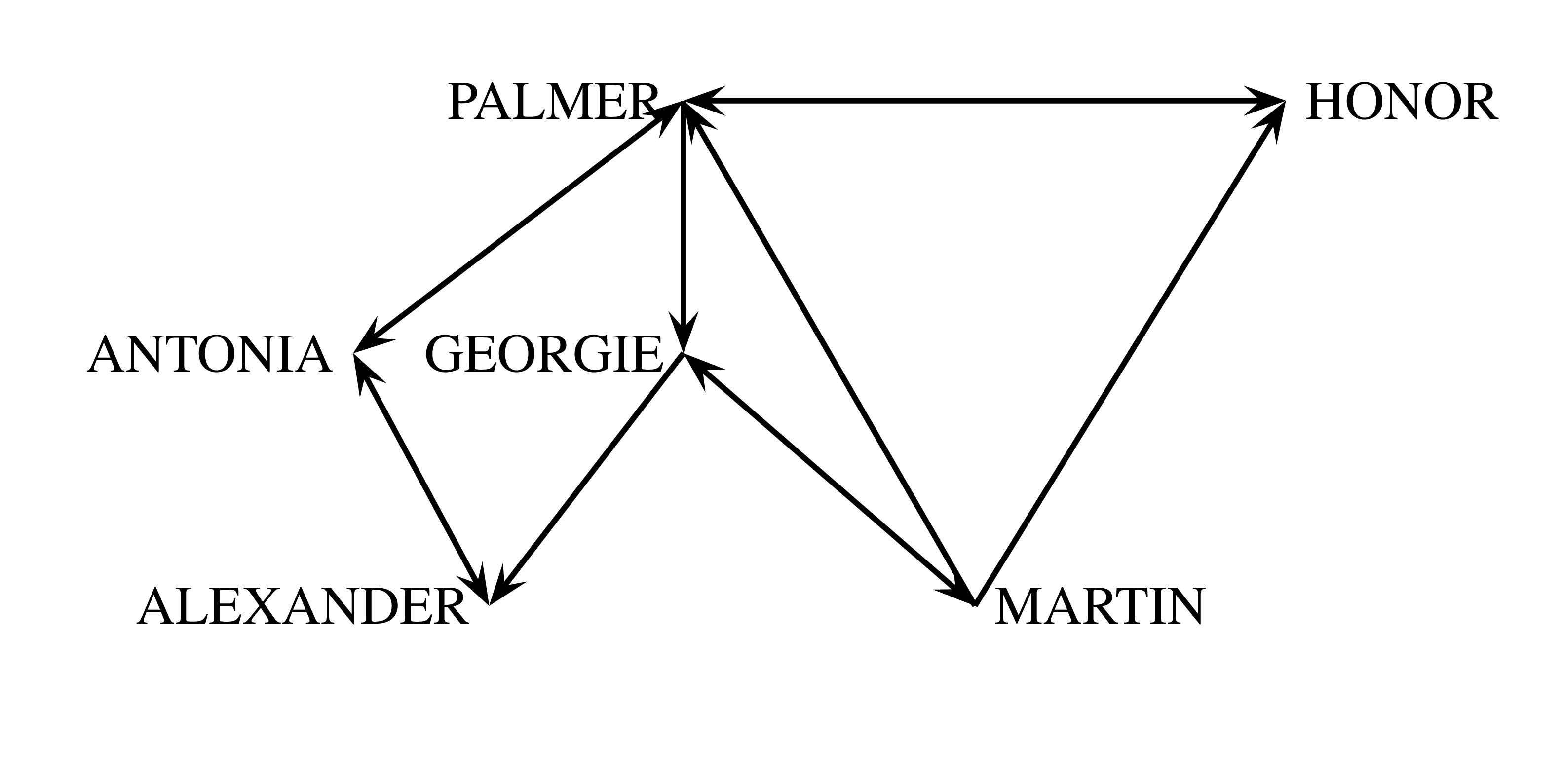Relational, Hierarchical or Multi-dimensional
In figure 8 I have drawn a graph that is equivalent to one presentated by Mathematican
Robin Gandy in his
lecture ‘Structure in Mathematics’1; he presents the love
relationships to be found in Iris Murdoch's novel Severed Head as a
directed graph and I shall use this as example data.
We consider how the information in this graph can be communicated as a set of independent
messages and we illustrate the use of entity models
inclusive of reference attributes to document the message structures.
There is of course nothing special about this
example —loves is a recursive many-many binary
relationship and
any such can be represented by a pair of many-one relationships and the pattern is
that of a directed graph.
We are using this example to provide us with some data with which we can illustrate
relational and non-relational
choices of message system in a simple setting. In a subsequent section we will build
on this example to illustrate
further features.
We illustrate four different choices of message system for communicating directed
graphs. Each choice has a natural affinity
with a different entity model; having said that, the pertinent point is that the
models only differ in the categorisation of binary relationships
as either reference of composition. In all cases the models have two binary relationships
representing the giver and the receiver of love respectivly.
Abstractly these are the arc adjacency relationships of a directed graph i.e. the
source respectively the destination of each arc of the graph.
If both of these binary relationships are classified as reference then two reference
attributes represent them in messages and a relational message system results.
If just one or the other of these relationships is classifed as a reference relationship,
the other being classified as a composition relationship, then a hierarchical message
structure results. There is a choice of two relationships to represent as compositional
and so a choice of two message systems. Finally we illustrate the case when both
binary relationships are considered to be composition relationships.
The first message system illustrated is relational, the next two hierarchical and
the final one is two dimensional.
Relational
Hierarchy of Person Loving
Hierarchy of Person Being Loved
A 2D Representation of Loving and Being Loved
